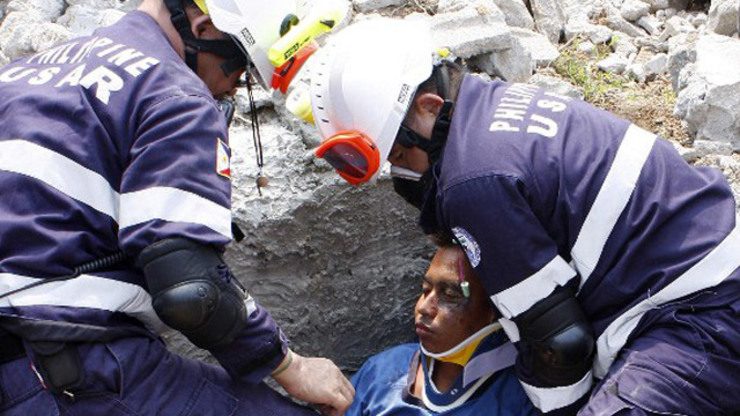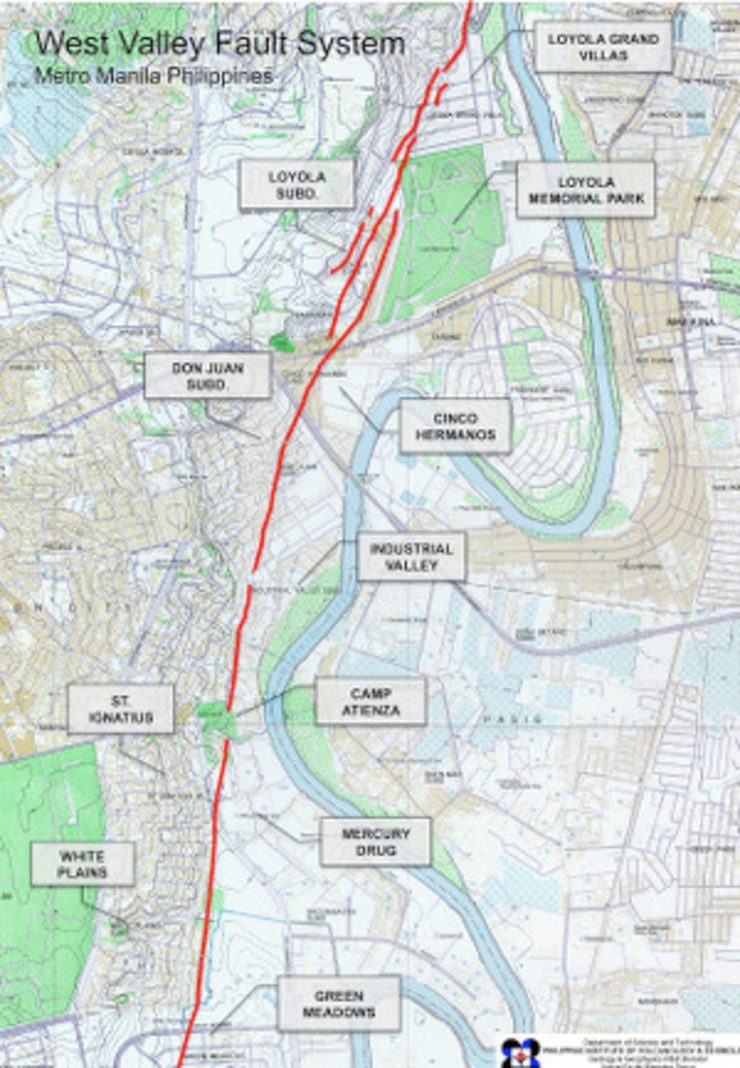SUMMARY
This is AI generated summarization, which may have errors. For context, always refer to the full article.

MANILA, Philippines – With a major Metro Manila earthquake due in the next 50 to 200 years, international earthquake experts say the best preparation is to ensure buildings in the megacity are structurally sound.
“By far the greatest thing we can do to prepare for earthquakes is to build buildings that will not collapse,” said Dr Gerry Gibson, president of the Asian Seismological Commission (ASC) on Tuesday, November 18.
With the concrete jungle that is Metro Manila, monitoring compliance to the National Building Code and National Structural Code is no small task. But countries like Turkey, China and Japan have made some headway.
All 3 countries, like the Philippines, are near large faults that could cause strong earthquakes of magnitude 6.5 or higher. (MAP: Strongest earthquakes in the PH)
Recent experiences with such earthquakes have led to boosted efforts to update and enforce their building codes.
This is because a majority of deaths from earthquakes are caused by the collapse of buildings and other infrastructure, if not by the tsunami that follows the quake.
Dr Domenico Giardini of the International Association of Physics of the Earth’s Interior (IASPEI) cited Turkey as one of the countries that has developed resilience against earthquakes.
In the last major earthquake to hit eastern Turkey, he said only 1% of buildings collapsed and casualties amounted to only 1% of the local population.
“This is extreme resilience. The same country 20 years ago would have probably had 10% casualties of local population. But their application of the building code over a 20-year period, especially for new buildings, brings an immediate result,” said Giardini.
Istanbul’s hard-line stance
Turkey’s capital, the city of Istanbul, is due for a big one just like Metro Manila since it lies on the North Anatolian Fault, one of the longest earthquake faults in the world.

And just like Metro Manila, Istanbul has a high population, high commercial and industrial density, and plenty of historical buildings to boot.
But Istanbul is taking a more aggressive stance on enforcing its building code.
The city government goes through the old part of the city building by building, said Giardini.
“The ones found by the city to be at risk, [they] write to fix it. If you decide not to fix it, the house would be sequestered. The city will then easily build it or fix it and then they will sell it. You don’t have it anymore because it’s your duty to have a safe house,” he said.
The city government also partnered with the World Bank and the Global Facility for Disaster Reduction and Recovery to strengthen the resilience of public buildings.
So far, at least 1,086 public buildings, including schools and hospitals, have been retrofitted and reconstructed, according to a World Bank report.
More than 3,600 civil engineers from all over Turkey were also trained in the earthquake retrofitting code.
China, after the 2008 Sichuan earthquake, has also been pursuing similar programs. They even have special teams that run tests on the quality of cement in each construction site for a new building, said Giardini.
It was also the standard of buildings in Japan that may have led to relatively small earthquake damage in 2011. Most of the damage and casualties were due to the tsunami, said Gibson.
Is Metro Manila ready?
In the event of a 7.2-magnitude earthquake in the West Valley Fault, also known as the Marikina Fault, around 10% to 13% of mid-rise and residential buildings are likely to be heavily damaged, said Renato Solidum, director of the Philippine Insitute of Volcanology and Seismology (Phivolcs).
“That’s still a lot. That’s where we need to focus our attention. We have many non-engineered buildings where several of our residential owners have built the houses themselves but did not have the benefit of being guided by a licensed civil engineer or architect,” he said.
How many of you have had your houses checked for resiliency? If not, you are at fault.
– Dr Domenico Giardini, IASPEI
According to the 2004 Metropolitan Manila Earthquake Impact Reduction Study conducted by Phivolcs and the Japanese government, 40% of residential buildings in Metro Manila will be damaged.
Building collapse will occur mostly in Western Marikina City, Eastern Pasig City, Quezon City, and Pasig City. (READ: When an earthquake hits Metro Manila)
Schools are likely to suffer the most damage, followed by hospitals and fire stations, according to the study.
Unfortunately, Metro Manila lacks an effective mechanism to make sure its buildings are earthquake-resilient.
The job primarily lies with the city building officials of each city government. Their task is to approve building permits and conduct annual inspections of buildings in their city.
But building officials, usually only one per city with a small team of inspectors, are swamped with work.
In highly urbanized cities, they would typically have to process around 1,000 building permit applications per month.
With the rate of building construction in the metro, it’s close to impossible for regular inspections to take place.
“It cannot be denied that there are times that these building officials may also have lapses due to the voluminous number of works and responsibilities that bombard them,” said Johnson Domingo of the Department of Public Works and Highways Building Code Development Office during Senate hearing in February.
Another way around the problem, said Solidum, is to impress upon engineers and architects their “professional and ethical responsibility” to follow the Building Code.
Phivolcs has also released a questionnaire that Filipinos can use to check if their house is earthquake-ready.
Giardini posed the challenge to the audience: “How many of you have had your houses checked for resiliency? If not, you are at fault.”
The last time the West Valley Fault generated a major earthquake was in 1658. According to Phivolcs, the fault has a tendency to erupt every 400 to 600 years. The year 2014 is the 356th year since the last earthquake, making the next big one possible in 50 years at the soonest. – Rappler.com
Add a comment
How does this make you feel?
There are no comments yet. Add your comment to start the conversation.